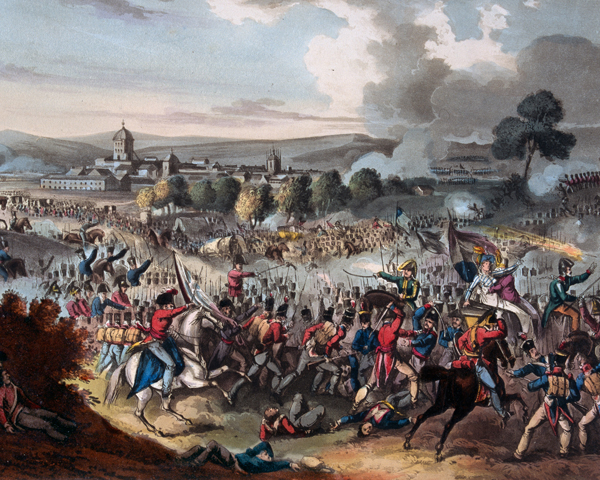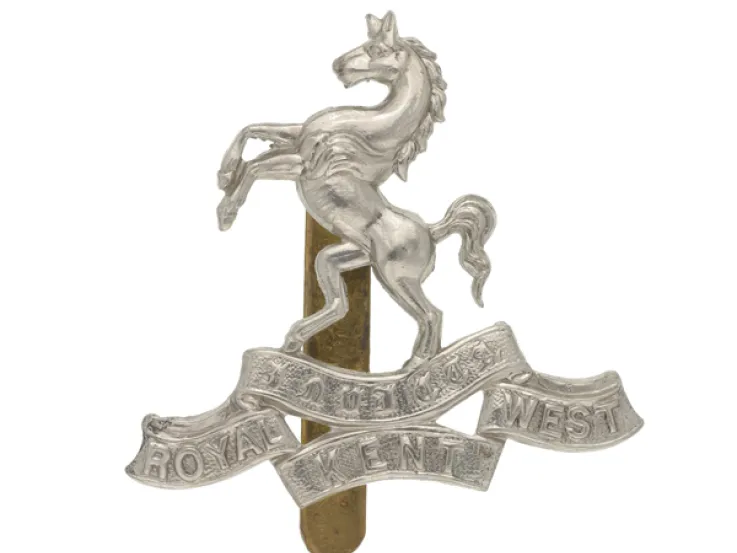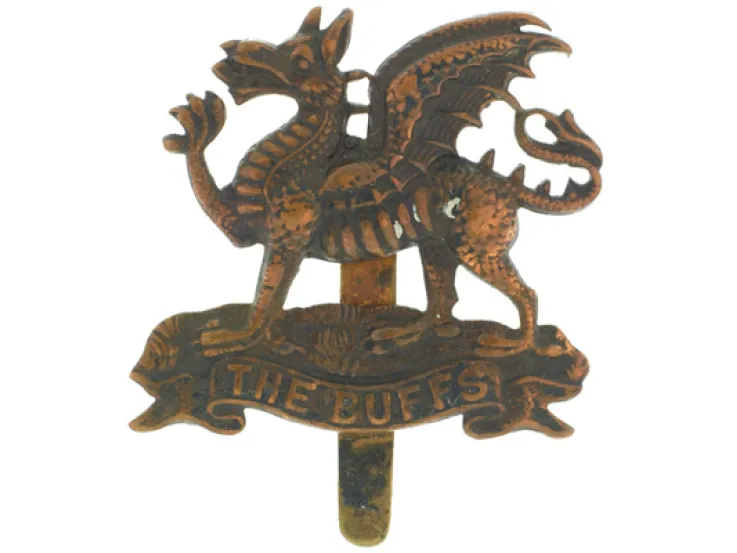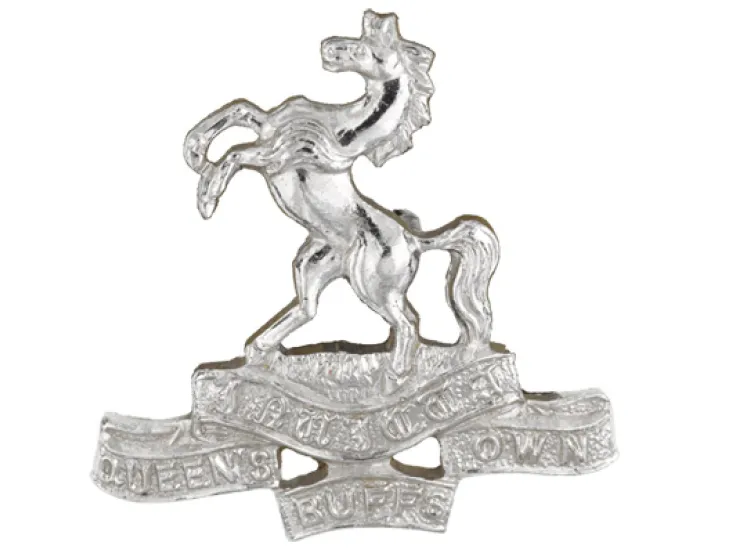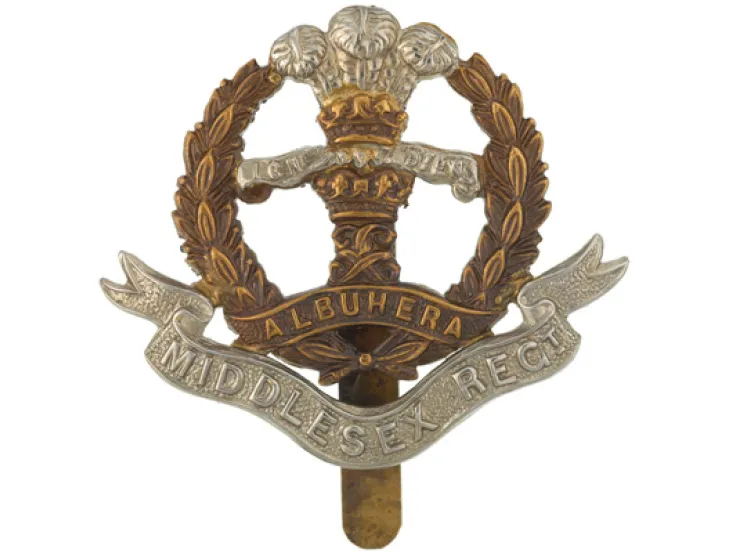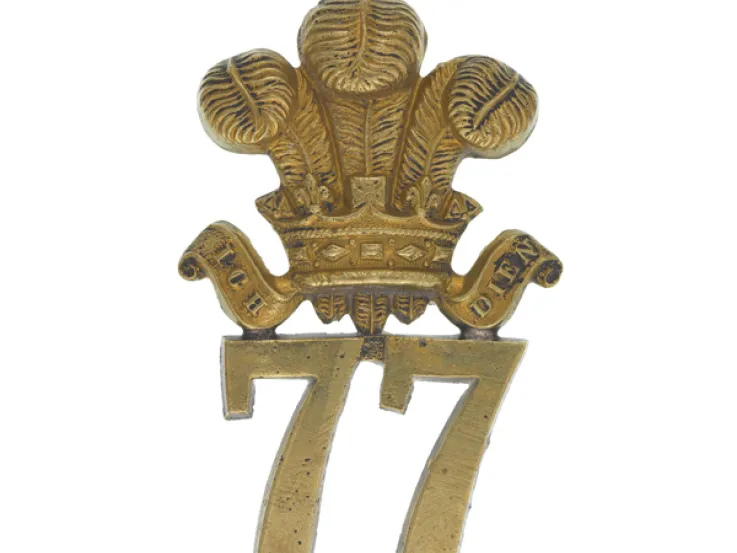Origins
This regiment was raised in 1755, originally with the numeral 52. It rose to 50 two years later, when the existing 50th and 51st Regiments of Foot were disbanded.
It first saw action during the Seven Years War (1756-63). The regiment was used in the Rochefort raid in 1757 and the German campaign of 1760-62, fighting at Corbach, Warburg, Villinghausen and Wilhelmsthal. Garrison service in Ireland and Jamaica followed.
American war
The regiment was stationed at New York on the outbreak of the American War of Independence (1775-83). However, it suffered so badly from disease that its soldiers had to be dispersed to other units in America and its officers sent home to recruit.
Its new recruits were mustered at Salisbury in November 1776. Two years later, they began serving as marines, seeing action at the Battle of Ushant.
In 1782, the Army's line infantry regiments were given county associations to assist with recruiting. The 50th was given West Kent. A year later, it returned to its infantry role, garrisoning Ireland and then Gibraltar.
Revolutionary war
Its first engagement of the French Revolutionary Wars (1793-1802) was at Corsica (1794). It also served on Gibraltar and Minorca, before deploying to Egypt, where it fought at Mandora and Alexandria in 1801.
In 1804, the regiment raised a 2nd Battalion, which never left England. Three years later, its 1st Battalion joined the force sent to besiege Copenhagen.
Peninsula
In 1808, 1st Battalion landed in the Iberian Peninsula and fought at Rolica and Vimeiro. A year later, it bore the brunt of the fighting at Corunna, holding off the French with bayonet charges.
In the heat of the battle, General Sir John Moore shouted out, ‘Well done, 50th! Well done, my majors!’ referring to two badly-wounded officers in the regiment. One of these was Charles James Napier, who was commanding the regiment in its colonel’s absence. He was captured at Corunna, but later became a noted commander-in-chief in India.
Later in 1809, 1st Battalion and a detachment from 2nd Battalion were sent on the Walcheren expedition. The following year, 1st Battalion returned to the Peninsula, and fought in many of the campaign's major battles, including Fuentes Onoro (1811), Vitoria (1813), the Pyrenees (1813), Nivelle (1813), Orthes (1814) and Toulouse (1814).
Victorian era
In 1827, the regiment was allowed to add the Duke of Clarence’s name to its title. In 1831, a year after the Duke had acceded to the throne as King William IV, it was renamed ‘the Queen’s Own’ after his consort, Adelaide.
In 1834, it began seven years guarding convicts, first on their voyage out and then in Australia itself. In 1841, it moved to India for the first time, remaining there for seven years. It fought in the Gwalior campaign of 1843 and the First Sikh War (1845-46) at Mudki (1845), Ferozeshah (1845), Aliwal (1846) and Sobraon (1846).
In 1854, it deployed to the Crimean War (1854-56), serving at the Alma (1854), Inkerman (1854) and Sevastopol (1855).
After garrison service in Ceylon (now Sri Lanka), it was deployed to New Zealand in 1863 for the Second Maori War (1863-66). It moved on to Australia in 1867, only returning to Britain in 1869.
Legacy
The regiment then remained in Britain and Ireland until 1881, when it merged with the 97th (The Earl of Ulster’s) Regiment to form The Queen’s Own (Royal West Kent Regiment).
Regimental museums
The National Army Museum works with a network of Regimental and Corps Museums across the UK to help preserve and share the history and traditions of the Army and its soldiers.
Discover more about the 50th (The Queen’s Own) Regiment by visiting the Queen's Own Royal West Kent Regimental Museum in Maidstone.




